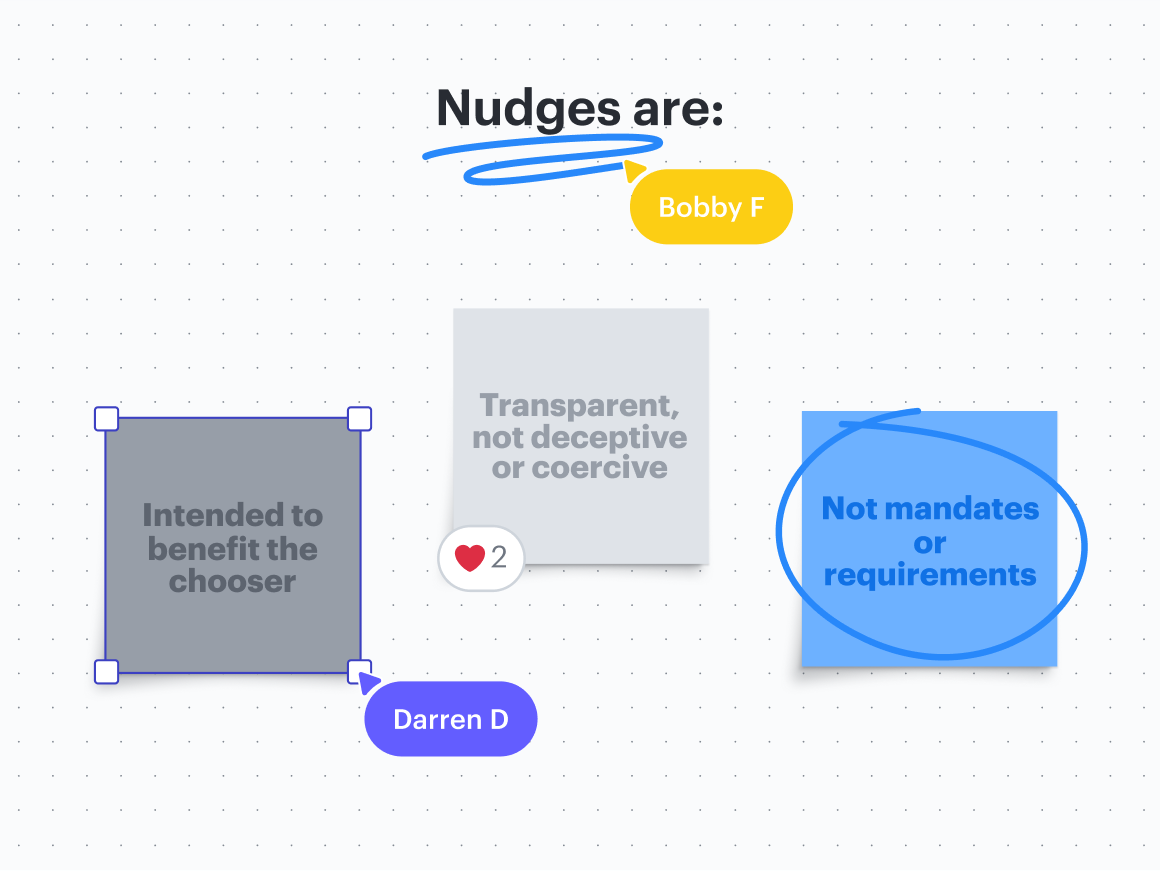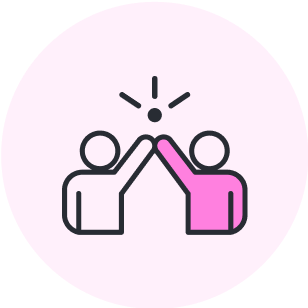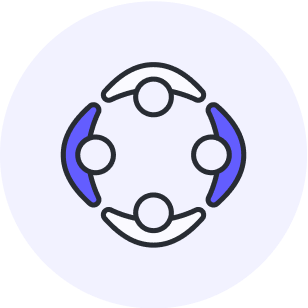
11 nudge theory examples to inspire your change management approach
Reading time: about 7 min
Topics:
Behavioral economics encompasses many different concepts and theories, one being nudge theory. Nudging is a way of influencing behavior, and it’s present in many areas of society, including healthcare, marketing, education, and even the government. It could also be an effective change management tactic for your organization.
In this blog post, we explore nudge theory, its use in the workplace, and some examples to inspire your change management approach.
What is nudge theory?
Introduced by professors Cass Sunstein and Richard Thaler in 2008 in their book Nudge: Improving Decisions about Health, Wealth, and Happiness, nudge theory is the concept that you can influence the choice someone makes, simply by how you present the choice. As defined by Sunstein in an interview with McKinsey, “A nudge is an intervention that maintains freedom of choice but steers people in a particular direction.”
Nudge theory is closely related to choice architecture, which is the design of decision-making environments to influence certain choices. Essentially, choice architecture is a larger, umbrella concept that nudge theory falls under.

A few things to keep in mind about nudges:
-
They are intended to benefit the chooser and influence them to act in their own self-interest. (If a nudge doesn’t benefit the chooser, it’s considered a “bad nudge.”)
-
They are transparent, not deceptive or coercive.
-
They aren’t mandates or requirements.
Nudge theory examples
Commonly, nudges take the form of:
-
Default options
-
Framing
-
Reminders
-
Social norms
-
Simplification
And there are many more forms! Let’s take a look at a few specific nudge theory examples to get a better idea of what nudging looks like.
Economics
An example of nudge theory in economics is found in a study conducted around 401(k) contributions made by U.S. military service members. The study found that participants were more likely to enroll in a 401(k) plan if they were encouraged to start contributing a certain percentage of their income. It didn’t matter what the suggested percentage was, just that contributing was simplified by having a suggested number.
Another example around 401(k)s is organizations making 401(k) programs opt-out rather than opt-in. By automatically enrolling every employee, those who don’t want to have a 401(k) have to take an extra step to be removed from the program.
Higher education
An example of nudge theory in higher education is a student receiving reminders in their student portal about signing up for tutoring services or enrolling in next semester’s courses before the deadline. Both nudges aim to get the student to take an action that benefits them, but they aren’t forcing the student to do something.
A common nudge in school cafeterias is healthy food options being put close to the cash register so that students are more likely to see and grab them.
Healthcare
An example of nudge theory in healthcare is when you get a text reminder from your doctor’s office that you have an appointment the next day. The goal is to encourage you to attend your appointment and ultimately reduce the number of missed appointments.
Another example is how the COVID-19 vaccine was messaged as an experiment to almost 1,600 people living in Japan. The participants received one of four messages about getting vaccinated. All of the messages included the same core information about the vaccine’s purpose and potential side effects, but the first group received only that basic message without nudges. Groups 2-4, on the other hand, were nudged.
The second group received the message with the addition of a stat about how many people in their age group said they would receive the vaccine. The third group got a message that included the way getting vaccinated could influence other people around them to get vaccinated. And finally, the fourth group received a message that included how not getting vaccinated could influence the people around them. Overall, the message that talked positively about influencing others to get vaccinated resulted in the biggest increase in older adults choosing to get vaccinated.
Marketing
Nudges can be found everywhere in marketing!
One example of nudge theory in marketing is how the prices of subscriptions are framed. Often, there’s a fairly significant discount for an annual vs. monthly subscription to encourage customers to commit for a year and pay a larger amount upfront.
Another example is when you’re buying something on a website and you get real-time updates of how many people have a certain product in their cart. Those notifications are meant to create a sense of urgency and popularity and influence a behavior, i.e., making a purchase.
These marketing examples are a bit different from the others we’ve mentioned so far because they fall into a common criticism of nudge theory: whether or not it’s ethical to manipulate behaviors for marketing. And while these examples aren’t necessarily harmful to the chooser, a core principle of a good nudge, outlined by Sunstein and Thaler, is that nudges should be used for social good and ultimately benefit the chooser.
Workplace
Nudging can also be used in the workplace as part of change management.
For example, if your organization is going through an Agile transformation, senior leadership championing and providing resources for the change is critical. Department leads could make templates available for Agile events so that each team has a starting point for daily standup, sprint planning, retrospectives, and more. Having templates readily available may encourage teams to incorporate Agile events into their schedules more consistently.

Lucid’s Agility Accelerator helps organizations scale proven ways of working and provides more visibility into how work is progressing across teams.
Learn moreAnother example of nudge theory in the workplace is integrating a digital-first approach into your company culture by making a digital solution, such as Lucid, your primary touchpoint before, during, and after a meeting. Mandating every employee to use that digital solution for every meeting wouldn’t be a nudge, but encouraging its use—whether through leadership or training—would be.
A third example is encouraging the adoption of a new tool by having the VP of IT talk about the value of the tool in a company all-hands meeting. Then, after the meeting, having HR send out a video training for learning how to use the tool.
Benefits of nudge theory
Nudge theory can offer a variety of benefits to organizations that implement it, including:
-
It can influence behavior and promote change.
-
It’s often inexpensive and fairly easy to implement a nudge, especially compared to some other forms of change management.
-
It helps employees feel like they have a choice in change.
-
It encourages behaviors that benefit employees. Or it should. You’ll need to reassess a nudge if it doesn’t benefit employees.
-
It can promote making decisions that are for the greater good.
Criticism of nudge theory
While nudge theory is used in many areas of society, including the workplace, it also has its critics. Perhaps the most predominant criticism of nudge theory is that it isn’t ethical because it lends itself to paternalism, or authority figures undermining personal choice because they believe they know what’s best for someone rather than allowing that person to decide what’s best for themselves.
As we mentioned previously, another criticism of nudge theory is that it lends itself to manipulative marketing tactics.
Other criticisms of nudge theory include:
-
Not all nudges are used for social good.
-
People can’t always be nudged.
-
Nudges are not always effective and don’t always solve larger problems.
-
Nudges should be tailored to different environments and not used in a one-size-fits-all way.
Nudge theory in your org
Nudge theory may be effective for making a change, or several changes, across your organization. Consider these examples, benefits, and downsides of nudging before working it into your larger change management strategy.

Interested in more change management tips?
Read moreAbout Lucid
Lucid Software is the leader in visual collaboration and work acceleration, helping teams see and build the future by turning ideas into reality. Its products include the Lucid Visual Collaboration Suite (Lucidchart and Lucidspark) and airfocus. The Lucid Visual Collaboration Suite, combined with powerful accelerators for business agility, cloud, and process transformation, empowers organizations to streamline work, foster alignment, and drive business transformation at scale. airfocus, an AI-powered product management and roadmapping platform, extends these capabilities by helping teams prioritize work, define product strategy, and align execution with business goals. The most used work acceleration platform by the Fortune 500, Lucid's solutions are trusted by more than 100 million users across enterprises worldwide, including Google, GE, and NBC Universal. Lucid partners with leaders such as Google, Atlassian, and Microsoft, and has received numerous awards for its products, growth, and workplace culture.
Related articles
5 organizational change management strategies for a modern workforce
Organizational change management is complex. Learn from Lucid’s experts on how to pull off a company-wide shift.
3 steps to aligning executives for effective change management
Learn how to conquer change management by establishing executive alignment first in this guest blog post by ExperiencePoint.
3 Agile change management tips: Leading through transformation
In this blog post, we share three change management tips that leaders can champion for successful agile transformation.
3 ways leaders can use visuals as a catalyst for change
Agile leadership expert Pete Behrens shares insights on how leaders can use visuals to effectively lead their organizations through change.
